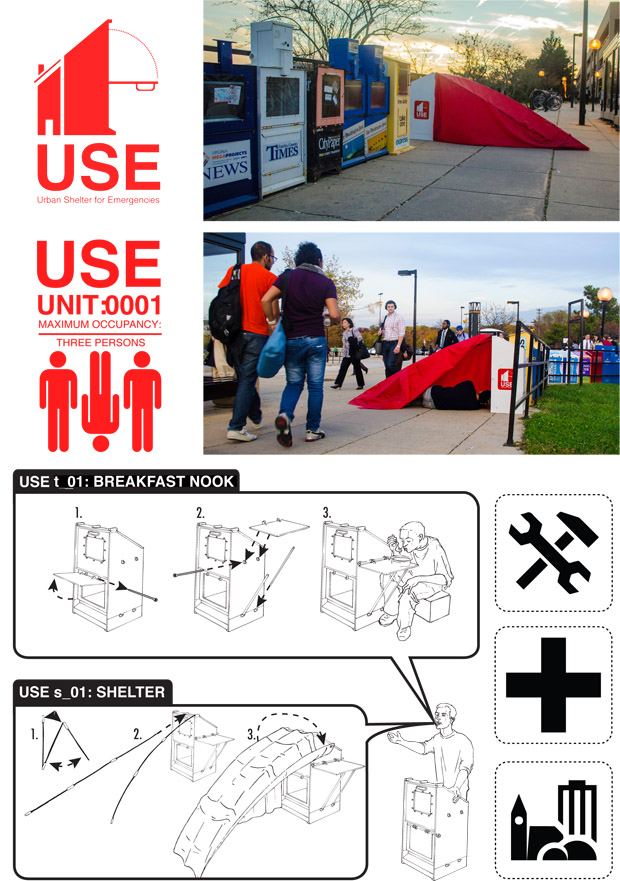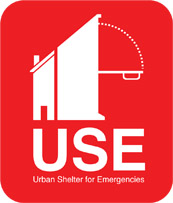During the process of the WHY project, we investigated the nature of urban habitation by mapping the city’s informal infrastructure. Among the more intriguing elements we documented were newspaper boxes spread throughout the city, with media contents catering to different community demographics. These boxes remain peripheral fixtures until someone’s desire transforms them into necessary destinations.
The USE project attempts to expand the utility of newspaper boxes as a means to critically reshape the city’s social fabric. The USE prototype adapts the marginal newspaper box into a community space, responsive to the needs of the moment. This improvised structure functions as a habitable common space — giving brief respite to anyone needing shelter, rest, storage or work space. This form of urban structure suggests a new logic for the design and construction of cityscape that is creative, unfinished, adaptive, playful — an all-inclusive intersection for the city’s wandering inhabitants. Such re-appropriation of daily urban infrastructure questions the current use of public space and multiplies the possibility of a city occupied by affection.


